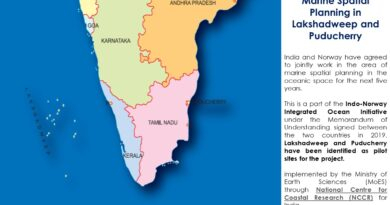Enceladus
Context:
NASA’s Cassini spacecraft has detected an unusually high concentration of methane, along with carbon dioxide and dihydrogen, in the moons of Saturn.
Key Highlights:
- The spacecraft has found that Titan has methane in its atmosphere and Enceladus has a liquid ocean with erupting plumes of gas and water.
- An international research team has used new statistical methods to understand if methanogenesis or methane production by microbes could explain the molecular hydrogen and methane. The models combined geochemistry and microbial ecology to decode what possible processes could explain these observations.
- A paper published last month in Nature Astronomy concluded that there may be unknown methane-producing processes on Enceladus that await discovery.
- The team gave a set of conditions, including dihydrogen concentration and different temperatures to understand if microbes would grow.
- It has opined that methane could be formed by the chemical breakdown of organic matter present in Enceladus’ core.
- On Earth, hydrothermal vents on seafloors are known to release methane, but this happens at a very slow rate.
- However, this hypothesis is plausible but only if Enceladus was formed through the accretion of organic-rich material from comets.
- The results have suggested that methane production from hydrothermal vents is not sufficient to explain the high methane concentration detected by Cassini.
Methanogenesis
Methanogenesis or biomethanation is the formation of methane by microbes known as methanogens. Organisms capable of producing methane have been identified only from the domain Archaea, a group phylogenetically distinct from both eukaryotes and bacteria, although many live in close association with anaerobic bacteria. The production of methane is an important and widespread form of microbial metabolism. In anoxic environments, it is the final step in the decomposition of biomass. Methanogenesis is responsible for significant amounts of natural gas accumulations, the remainder being thermogenic.
Enceladus Facts –
- Enceladus is the sixth-largest moon of Saturn.
- It is mostly covered by fresh, clean ice, making it one of the most reflective bodies of the Solar System.
- It has a wide range of surface features, ranging from old, heavily cratered regions to young, tectonically deformed terrains.
- It was discovered on August 28, 1789, by William Herschel,
- The two Voyager spacecraft, Voyager 1 and Voyager 2, passed nearby in 1980 and 1981.
- In 2005, the Cassini spacecraft started multiple close flybys of Enceladus, revealing its surface and environment in greater detail.
- In particular, Cassini discovered water-rich plumes venting from the south polar region.
- According to NASA scientists, the plumes are similar in composition to comets.
- In 2014, NASA reported that Cassini found evidence for a large south polar subsurface ocean of liquid water with a thickness of around 10 km.
- On June 7, 2021, astronomers reported detecting substantial amounts of methane, a possible sign of microbial life, on Enceladus.
About Titan –
- Titan is larger than the planet Mercury and is the second largest moon in our solar system.
- It is the only one moon in the solar system with a substantial atmosphere.
- Titan’s atmosphere is made mostly of nitrogen, like Earth’s, but with a surface pressure 50 percent higher than Earth’s.
- It is the only place besides Earth known to have liquids in the form of rivers, lakes and seas on its surface.
- The largest seas are hundreds of feet deep and hundreds of miles wide.
- Beneath Titan’s thick crust of water ice is more liquid, an ocean primarily of water rather than methane.
- Titan has no known moon, but it’s possible for a moon to have moons.
- Titan has no rings, while some of Saturn’s moons create rings around the planet.
- Three other spacecraft – Pioneer 11, and Voyagers 1 and 2, studied Titan while flying by Saturn.
Source: Indian Express
You can find many articles on SPACE (part of GS III) in our website. Go through these articles share with your friends and post your views in comment section.



